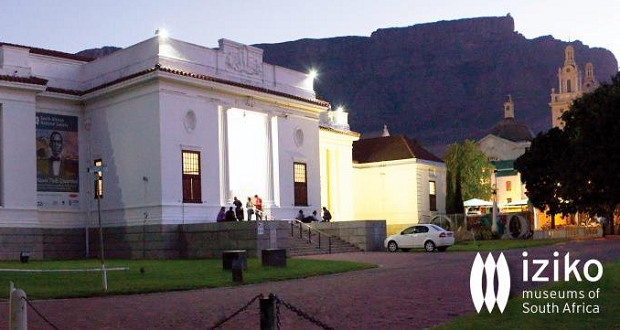Since its opening, the Our Lady exhibition in Cape Town has encountered some problems. From artists calling for their works to be taken down, to Sweat criticising the display of a particular artist’s work, The Daily Vox takes a look at what has been going down with the exhibition which has the theme of women empowerment.
What is the exhibition about?
The exhibition, ‘Our Lady’, was designed to “interrupt the typical traditional moral attitudes and male dominated stereotypes that surrounds imagery of the female formâ€. Basically it’s aimed at questioning the artistic representations of women and celebrating their ability to push against the status quo.
It is currently open at the Iziko South African National Gallery in Cape Town until June 2017. The collection spans a period of 170 years, with artworks taken from the Iziko and the New Church museums’ collections.
#Discover and #Explore Our Lady†at Iziko SA National Gallery challenges the age visual perception of the female form. pic.twitter.com/mKWWFJWk9I
— Iziko Museums (@Iziko_Museums) November 20, 2016
Why are the artists unhappy with the exhibition?
Six of its artists (Bridget Baker, Njideka Akunyili Crosby, Khanyisile Mbongwa, Deborah Poynton, Tracey Rose and Penny Siopis) wrote a letter to Iziko asking for their works to be taken down from the exhibition, saying that while the aim of the exhibition is to empower and celebrate women’s roles in addressing male-dominated stereotypes, it actually fails to do so.
The artists say it does not reflect the demographics of the country because it hardly displays any works by black female artists, as well as by trans and non-binary artists. Of the works on display, 75% of them are by men, with a whole three out the the 27 artists being black women.
Brighton Khoza, communications assistant of Iziko Museums of South Africa, supplied The Daily Vox with the original wall text from the exhibition which speaks on this point. It said that the intention of the exhibition is to highlight the inherent sexism and male dominance in the Iziko’s historical works. “It is not a coincidence that the works are mostly by male artists as these works specifically highlight this unequal representation,†reads the text.
Therefore, the decision to include more works by male artists than female artists wasn’t an attempt to perpetuate the status quo, but it was “both a symptom and an accurate reflection of collection acquisition policies to dateâ€.
What happened to Zweletha Mthethwa’s exhibit?
The artists also expressed their unhappiness with displaying a photograph by Zweletha Mthethwa, who is accused of murdering a sexworker. They say that the inclusion of Mthethwa’s work undermines the dignity of Nokaphila Kumalo, the woman who Mthethwa is accused of killing.
The Sex Worker Education and Advocacy Taskforce (Sweat), also spoke out against the display of Mthethwa’s work in the exhibition. Early in December, Sweat, along with members of Sisonke, staged a protest on the steps of the Iziko National Gallery calling for the photograph to be taken down.
A letter was also written to Iziko by Sweat’s Human Rights and Advocacy Manager, Ishtar Lakhani. She wrote: “The irony of promoting the work of a man accused of murdering a woman as part of an exhibition aimed at empowering women, is not wasted on us.â€
After the outcry, Mthethwa’s work was removed and replaced with the letter instead. Later, Iziko, along with Sweat and The New Church Museum, also held a discussion about the inclusion of Mthethwa’s artwork on 15 December 2016. The New Church Museum also decided to remove its collection from the exhibition the morning of the discussion.
Isn’t the exhibition’s title also a bit problematic?
It could be argued that the name of the exhibition is also a problem, since a ‘lady’ refers to a stereotypical image of a white, cishet woman, who “knows her place†in society. With the exhibition trying to break down these stereotypical images of women, it’s ironic that they would go with a name that implies ‘kept’ womanhood.
But according to Khoza, the name was chosen by The New Church Museum, so in the end we’re not too surprised, given the organisation’s conservative nature.









